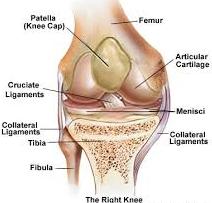Symptoms and Treatment of Herniated Disc:
 One of the most important parts of the body that is often times abused. There are a lot of people tend to force themselves to do flexible things such as bending and splitting. This causes the spinal disc to break. When part of the spinal disc pushes out to its normal position, this is when the herniated disc occurs. As the herniated disc occurs, the nerves and spine will be compressed that causes you to feel extreme pain.
One of the most important parts of the body that is often times abused. There are a lot of people tend to force themselves to do flexible things such as bending and splitting. This causes the spinal disc to break. When part of the spinal disc pushes out to its normal position, this is when the herniated disc occurs. As the herniated disc occurs, the nerves and spine will be compressed that causes you to feel extreme pain.
Herniated disc occurs any time without notice. The portion of the pain depends on where the herniated disc is located. It may occur on your lumbar spine or lower back portion and cervical spine or in your neck portion. Most sufferers tend to be elders because their bone strength decreases due to aging. This is the usual age to suffer bone fracture. Most of them usually suffers herniated disc in lumbar spine portion. This portion is responsible for the trunk of the body. When herniated disc occurs in this portion, the patient suffers extreme pain in their lower back.
Symptoms of Herniated Disc
Herniated Disc usually takes place due to accident. The most common is when a person would get a heavy fall from a high place such as, stairs. When your disc split out, the nerves between the muscles and the spine would be squeezed; thus, causes the severe pain. If, these happen it will cause a person not to function well. That’s why some irregularities may happen because of malfunction. Here, are some symptoms to know if you already have Herniated Disc.
- Extreme Pain
As the herniated disc occurs; the spinal nerves will be pressured and causes some irregularities such as pain. When this occurs on your lumbar spine, the extreme pain can be felt in your lower back portion and your legs due to irritations. If the herniated disc occurs in your cervical area, the pain usually goes on your arms and neck. In the contrary, you will feel the pain in you buttocks down to the back of the legs when the affected discs are in the lumbar area. So; if you experience this kind of pain, you might have this kind of illness.
- Insensitivity or Numbness
Some of the patients of this illness often suffer insensibility and cramps. These will also occur in the portion where you experience extreme pain.
- Weakness of Muscles
Muscles become weak due to nerve irritations. If you keep on suffering the pain without any consultations, the illness comes to worst. It might become paralyzed due to this illness.
- Irregular Bowel Movements
If you are suffering irregular bowel movements, this is one of the sign that you are having herniated disc symptoms. If you have problems in secreting waste materials and insensitivity in your genitals, you must immediately see your doctor and ask for proper medications.
Treatment of Herniated Disc
Herniated disc treatment depends mainly on the severity of a particular case. Nowadays, the medical field has discovered many ways to treat such illness. They vary depending on the age of the patient, the types of symptoms the patient is experiencing and the patient’s activity routine.
- Herniated disc treatments usually aim to help the patient to relieve the pain that he is experiencing.
- It helps to ease numbness and weakness in some parts of the body like the lower back and leg.
- Also, treatments for this illness aim to prevent additional injury and lessen the risk of having disabilities.
- According to research, a herniated disc can heal on its own due to resorption.
- The jellylike material found inside the disc is dissolved and would be absorbed by the body.
- However, if the patient’s case is a severe one, surgical procedure is taken into consideration.
Active’s friendly staff looks forward to assisting you in making your appointment in any of our clinics. Please do not hesitate to contact us, we are dedicated to providing the best physical therapy service in Maryland.








